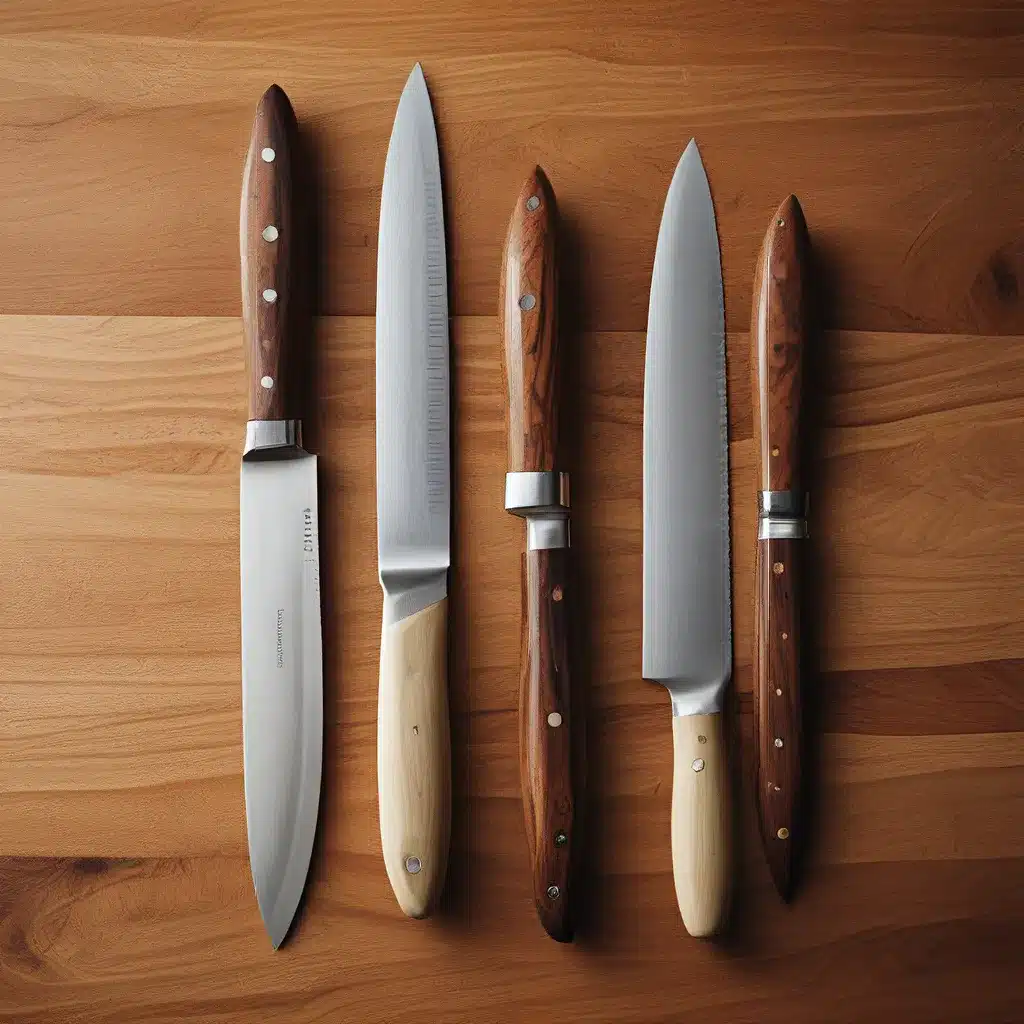
Ah, the humble knife – a trusty companion in the kitchen that can make or break your culinary experience. As a passionate home cook, I’ve come to realize that mastering a few key knife skills is the difference between effortlessly slicing, dicing, and chopping, and well, let’s just say, a rather unpleasant experience in the kitchen.
But fear not, my fellow kitchen warriors! Today, I’m going to share with you the 5 essential knife skills that I believe every home cook should have in their arsenal. These techniques will not only make you feel like a professional chef, but they’ll also save you time, minimize waste, and ultimately, elevate your home-cooked meals to new heights.
1. The Chef’s Grip
Let’s start with the foundation of all knife work – the chef’s grip. This is the way you hold your knife to ensure maximum control and precision. It may feel a bit awkward at first, but trust me, it’s a game-changer.
To master the chef’s grip, place your index finger and thumb on either side of the blade, just behind the bolster (the thick part where the blade meets the handle). Wrap your remaining fingers around the handle, keeping your knuckles parallel to the blade. This posture allows you to guide the knife with your fingers while using the weight of the blade for effortless slicing and chopping.
Practice this grip while cutting various ingredients, from onions to carrots to herbs. You’ll quickly notice how much more control and stability you have, leading to cleaner, more consistent cuts.
2. The Claw Grip
Now that you’ve got the chef’s grip down, let’s move on to the claw grip – a technique that will keep your fingers safe while you’re cutting. This is especially important when dicing or mincing, where your fingers are in close proximity to the blade.
To use the claw grip, curl your fingers inward, keeping your knuckles tucked towards the palm of your hand. Your fingertips should be resting on the ingredients you’re cutting, acting as a guide for the knife. This protects your digits from any accidental slips or cuts.
Not only does the claw grip keep your fingers safe, but it also allows you to maintain precise control over the knife, ensuring even, consistent cuts. Practice this grip when working with garlic, herbs, and any other small or delicate ingredients.
3. The Rocking Chop
Ah, the rocking chop – a technique that will have you chopping like a professional in no time. This method is perfect for quickly and efficiently mincing herbs, crushing garlic, or cutting through soft ingredients like tomatoes.
To perform the rocking chop, start by placing the tip of the knife on the cutting board, with the blade resting flat. Gently rock the knife back and forth, using the weight of the blade to do the work. As you become more comfortable, you can increase the speed and pressure to create smaller, more uniform pieces.
The key to mastering the rocking chop is to keep your knuckles parallel to the blade and your fingers in the claw grip. This will ensure safety and precision as you chop away.
4. The Slice and Dice
Next up, the slice and dice – a technique that will have you dicing onions and cutting vegetables like a seasoned pro. This method is all about control and coordination, and it’s a crucial skill for any home cook.
To slice and dice, start by making a series of parallel cuts, keeping your knife blade flush with the cutting board. Once you’ve made your slices, rotate the ingredient 90 degrees and make a second set of parallel cuts, creating a perfect grid of diced pieces.
Remember to use the chef’s grip and the claw grip to maintain control and safety throughout the process. And don’t be afraid to adjust your knife angle and vary the depth of your cuts to create different-sized pieces, depending on your recipe.
5. The Julienne Cut
Last but not least, the julienne cut – a technique that will transform your ingredients into thin, elegant strips that are perfect for salads, stir-fries, and more.
To julienne, start by making a series of parallel cuts, just like in the slice and dice method. However, instead of rotating the ingredient, you’ll make a second set of cuts perpendicular to the first set, creating long, thin strips.
The key to mastering the julienne cut is to maintain even pressure and a steady hand. Use the chef’s grip and the claw grip to ensure precision and safety as you work. And don’t be afraid to adjust the thickness of your cuts to suit your specific recipe needs.
Remember, the more you practice these 5 essential knife skills, the more confident and efficient you’ll become in the kitchen. And who knows, you might even impress your friends and family with your professional-level knife work!
Now, I know what you’re thinking – “But where can I get my hands on a high-quality knife to practice these techniques?” Well, my friends, I’m glad you asked. Head on over to https://hermanknives.net/ to explore their exceptional collection of kitchen knives, carefully crafted to elevate your home cooking experience.
So, what are you waiting for? Grab your knife, dive into the world of essential knife skills, and get ready to transform your home-cooked meals into culinary masterpieces. Happy cooking!


